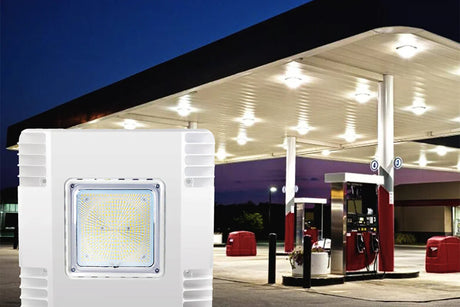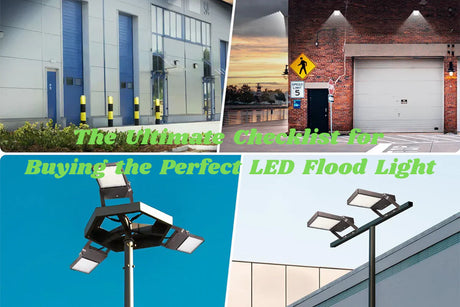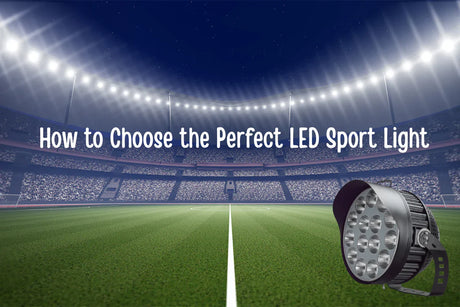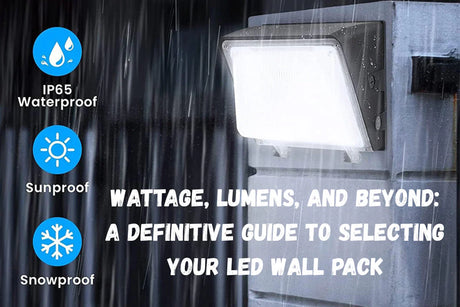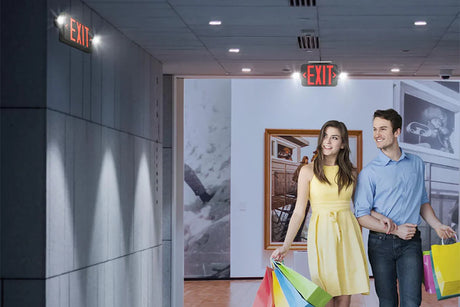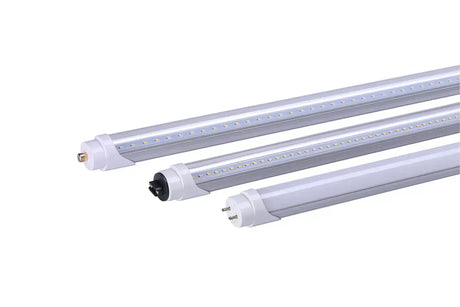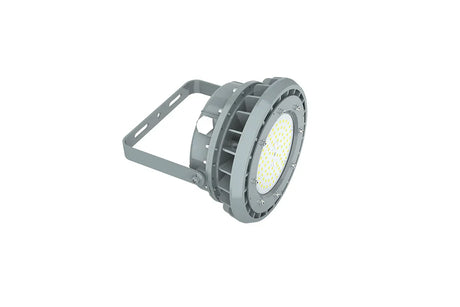Choosing the right LED wall pack can transform your building's exterior, boosting security, safety, and curb appeal. But when faced with terms like wattage, lumens and CCT, it’s easy to feel lost. What do these specifications actually mean for your property?
Consider this your definitive guide. We'll break down the essential terminology to help you confidently select the perfect fixture from the high-performance LFD Lighting LED Wall Pack collection.
Wattage: It's About Energy, Not Brightness
Let's start by debunking a common myth. For decades, we were trained to associate higher wattage with brighter light. With old incandescent bulbs, this was true. However, in the world of LEDs, wattage simply measures energy consumption.
An LED wall pack uses significantly less energy (fewer watts) to produce the same amount of light as a traditional metal halide or high-pressure sodium fixture. So, when you see a 40W LED wall pack, don't mistake it for a dim light. Instead, think of it as a powerful light source that will dramatically lower your electricity bill.
The Takeaway: Look at wattage as an indicator of energy efficiency, not brightness.
Lumens: The True Measure of Brightness
While wattage tells you about energy use, lumens (lm) tell you about brightness. Lumens are the direct measurement of the total light output from a fixture. Simply put: the higher the lumen count, the brighter the light.
But how many lumens do you actually need? The most practical way to decide is to consider the old, inefficient fixture you are replacing. Since LEDs are far more efficient, you can't compare old watts to new watts. Instead, you compare the light output.
Here’s a quick reference to help you find the right LED replacement:
- To replace an old 70W-100W Metal Halide (MH) or High-Pressure Sodium (HPS) fixture, look for an LED wall pack in the 3,000 - 5,500 lumen range.
- To replace a 150W-175W MH fixture, you'll want an LED equivalent in the 6,000 - 9,000 lumen range.
- To replace a powerful 250W MH fixture, target an LED option around 10,000 - 13,000 lumens.
Even with these guidelines, every property is unique. Factors like mounting height and the desired level of security can influence your final decision. It can be stressful trying to lock in one perfect brightness level before you've even installed the light.
This is where a key innovation becomes your best friend: wattage-selectable technology. Many advanced fixtures, including several in the LFD Lighting collection, allow you to choose from multiple power settings via a simple internal switch. This directly controls the lumen output.
The Takeaway: Use your old fixture's wattage to find your target lumen range, and for ultimate peace of mind, choose a wattage-selectable fixture to fine-tune the brightness perfectly for your space.
Color Temperature (CCT): Setting the Right Mood
Correlated Color Temperature (CCT) describes the color appearance of the light, measured in Kelvin (K). It dictates the ambiance your lighting will create.
- 3000K (Warm White): Produces a soft, inviting glow similar to a halogen bulb. It's great for hospitality settings or building entrances where you want a welcoming feel.
- 4000K (Neutral White): A balanced, clean white light that enhances visibility without being too harsh. It's an excellent all-purpose choice for general outdoor areas.
- 5000K (Cool White/Daylight): A crisp, vibrant light that closely mimics natural daylight. This high-contrast light is ideal for security lighting, task areas, and parking lots where maximum visibility is crucial.
This innovative feature allows you to switch between 3000K, 4000K, and 5000K with a simple toggle inside the fixture, ensuring you get the perfect color tone for your environment.
Beyond the Basics: Features That Make a Difference
-
Full-Cutoff vs. Traditional: A traditional wall pack casts light outwards and upwards, which can create glare and light pollution. A full-cutoff design directs all light downwards, where it's needed. This "dark-sky friendly" approach reduces glare, prevents light from trespassing onto neighboring properties, and creates a more comfortable, effective illumination.
-
Dusk-to-Dawn Photocell: For automated, "set-it-and-forget-it" operation, choose a wall pack with a built-in photocell. It automatically turns the light on at dusk and off at dawn, maximizing security and energy savings without any manual intervention.
-
Durability (IP Rating): Exterior fixtures must withstand the elements. Look for an IP65 rating, which ensures the fixture is sealed against dust and protected from jets of water. The rugged, die-cast aluminum housing of LFD Lighting's wall packs provides this essential durability for a long, maintenance-free life.
Your Selection Checklist
Feeling more confident? Here’s a quick summary to guide your choice:
- Define Your Goal: Is it for general security, task lighting, or creating ambiance?
- Determine Brightness: Choose the right lumen output for your application. Consider a wattage-selectable model for flexibility.
- Select the Mood: Pick the CCT that best suits your environment, or choose a CCT-selectable fixture for on-site customization.
- Choose the Right Features: Opt for a full-cutoff and add a photocell for effortless automation.
You are now equipped to make an expert choice. By focusing on lumens for brightness, CCT for mood, and the advanced features that add convenience and efficiency, you can find the perfect lighting solution.
Ready to illuminate your property? Explore the versatile and robust fixtures in the LFD Lighting LED Wall Pack collection and find the perfect match for your needs.


